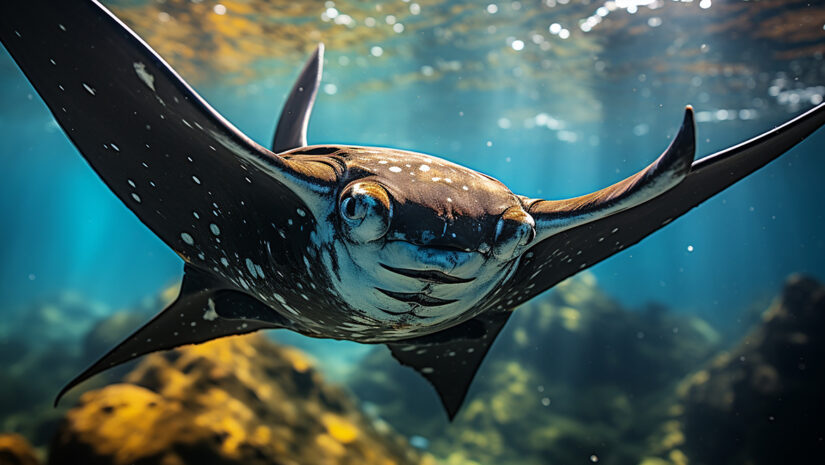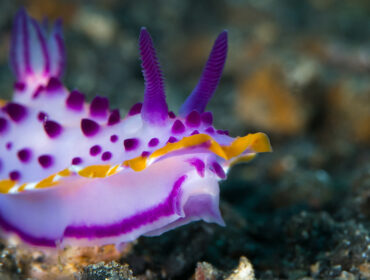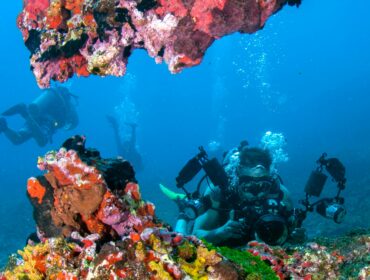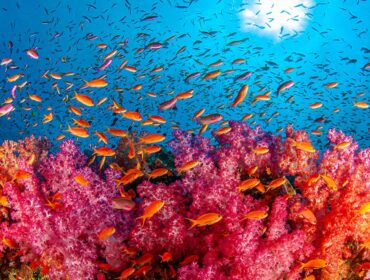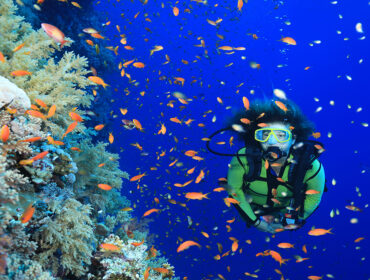Unique marine encounters can transform an ordinary dive into an unforgettable experience. However, with thousands of dive destinations and even more dive sites, finding the right place at the right time can be challenging. To increase your chances of such encounters, consider planning your scuba diving trips around the most popular destinations known for marine animal sightings and visiting during the appropriate seasons. We will focus on the best places and times to encounter the elegant Manta Ray.
Here’s a look at the Top 5 Places for Manta Ray Encounters, and if you’re into underwater photography. Don’t forget to take your underwater cameras with you!
1. Kona, Hawaii (All year round)
The Kona Coast is one of the best places in the world to experience manta rays up close. Often described as a once-in-a-lifetime opportunity, encountering these magnificent creatures is truly special. Dive operators in Hawaii enhance this experience with a night diving twist, making it even more spectacular. Divers are provided with underwater flashlights and instructed to shine their beams toward the surface. The bright lights attract swarms of plankton, which in turn draw mantas and other fish nearby. To the delight of divers and snorkelers, manta rays often swoop, turn, and even perform somersaults toward the lights where the plankton is abundant, showcasing their surprising agility. Over 60 individual manta rays, identified by the unique spots on their undersides, have been photographed, cataloged, and named regulars on the Manta Ray Night Dives.
(For more, read: Must Dive Sites: The Manta Ray Night Dive in Kailua Kona, Hawaii)
2. Baa Atoll, Maldives (May to July)
Hanifaru Bay of the Baa Atoll in the Maldives is a place where the dreams of nature come true. Dreams of seeing the ever-graceful Manta Rays, lots and lots of them. This Atoll is divided by a 3km wide channel, with big drop-offs into deep waters. The bay funnels inward, gradually from a depth of 25m to a slope that tables out at 2m and continues over a shallow, rocky reef before opening up to a deep-water channel. A large coral block in the middle of the channel, teaming with small fish and invertebrates, makes up a ‘cleaning station’ for manta rays who visit the area periodically.
For most of the year, the quiet bay experiences little activity. However, during the southwest monsoons from May to July, an upwelling current from the deep waters to the east brings plenty of plankton. This attraction draws not just a few but dozens of manta rays at a time. The highest recorded number of manta rays spotted in a single day here is 240 individuals, each identifiable by their unique markings.
(Read more: Experience The World’s Greatest Manta-Ray Aggregation at Baa Atoll, Maldives)
3. Koh Bon, Thailand (October to May)
A world-class diving destination- in Thailand, several dive sites exist in the Similan islands, among others. However, your best bet would be Koh Bon.
Manta Rays come in numbers to Koh Bon because it’s both a cleaning and feeding station. There are around twenty different resident Manta Rays at Koh Bon that are regularly identified by their unique fingerprint like markings on their underbellies. Generally they’re not shy and are used to having lots of divers and bubbles in the water. They’ll glide past at touching distance seemingly as intrigued with the divers, as the divers are with them.
4. Raja Ampat (Irian Jaya), Indonesia (April/ May)
Put simply, Manta rays are ordinary when diving in Raja Ampat, Indonesia. The Kri’s Manta Point in Raja Ampat is a famous cleaning station frequented by the graceful giants. They are not shy either and swim closely above you so you can see them at arm’s length away.
5. South Plaza Island, Galapagos Islands (June and October)
Often seen in open water between the central islands, mainly from the cliff at South Plaza or the beach at Rábida in the Galapagos Islands, Manta rays are always a delight for divers. Wolf and Darwin are good sights for manta rays and whale sharks, among other shark species.

